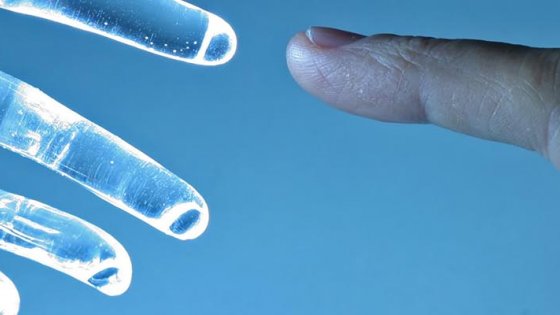Internet of Things (IoT)
The Internet of Things (IoT) refers to the networking of uniquely identifiably physical objects and their virtual representations in an Internet-like structure.
In it, objects, people, systems and information sources are linked to form an infrastructure capable of processing information from both the real and virtual worlds by means of smart services. Moreover, the system is able to respond to this information.
The term Internet of Things was popularized by the British scientist Kevin Ashton of the Auto-ID Center at the Massachusetts Institute of Technology (MIT) who began using it in 1999.
1. Background
The Internet of Things is essentially based on the fact that many real-life devices supply information on their own status to the network. Data on current usage or wear, fill levels and ambient conditions can be used to ensure that parts are exchanged before they fail or to optimize service intervals and energy consumption.
A prerequisite of a well-functioning Internet of Things is the standardization of the components and services used. In addition, it requires easily accessible, secure network connections as well as the development of cost-efficient automated, digital services in the network.
Cloud computing and big data also play a major role in the implementation of the Internet of Things. Inexpensive sensors and processors integrated into everyday objects are to intensify networking and offer new services based on artificial intelligence and machine learning to facilitate everyday life. Thus, the Internet of Things enters the personal lives of numerous people and, as a result, it does not only touch on processes of technical standardization but also raises questions on privacy and data protection.
These issues are covered by the EU's General Data Protection Regulation (GDPR) that will become effective in all EU member states on 25 May 2018. It harmonizes data protection rules across the EU and lays down the legal basis for processing personal data as well as the rights of persons concerned and the duties of the data processors. Furthermore, the GDPR also applies to enterprises based outside the European Union if they also offer their services to EU citizens (marketplace principle).
2. Special case: Industry 4.0
"Industry 4.0" is a special application case of the Internet of Things. It relates to the objective of re-defining industrial production processes by intelligently networking components and subsystems. In this context, the real-time behaviour of systems - summarized by the concept of "cyber-physical systems" (CPS) – plays a key role, with standards being essential – especially for safety and security aspects.
Both topics – Industry 4.0 and the Internet of Things - fire the imagination of policy-makers, business leaders and IT experts. After all, they are about millions of jobs and nothing less than the security and prosperity of tomorrow's world.
3. State of play in standardization
For the Internet of Things to function well, efficient standardization is required for the components and services used. At present, existing standards are reviewed to see whether they can be adjusted for application in the Internet of Things. While some standards only have to be adapted, completely new specifications have to be developed on other topics for the Internet of Things.
The 13-part International Standard ISO/IEC 29341 was already published on the management of devices and their protocols. Standards addressing the vocabulary of the Internet of Things (ISO/IEC CD 20924) and the structure of an appropriate reference architecture (ISO/IEC CD 30141) are currently under development. Numerous other normative documents on topics such as frameworks, use cases, the use of object identifiers and IoT in the supply chain are in preparation.
4. Organizational arrangements
To push ahead standardization in this field, Joint Technical Committee 1 (ISO/IEC JTC 1) "Information Technologies" established Subcommittee 41 "Internet of Things and related Technologies". Set up at the international standardization organizations ISO and IEC, this new subcommittee combines working groups 7 "Sensor Networks" and 10 "Internet of Things", and hence builds on the contents already developed and continues this work.
In Austria, the related national mirror body AG 001.41 ASI/OVE Joint Working Group Internet of Things of Committee 001 "Information technology" held its first meeting under the chairmanship of Prof. Dr. Manfred Wöhrl of the association DigitalSociety on 3 April 2017. The IoT pioneer also represents Austria as a delegate at the international level. In the specialized field of Industry 4.0, Austrian Standards developed the Normungs-Kompass Industrie 4.0 (standardization roadmap for Industry 4.0) in co-operation with the Association Industry 4.0 Austria. Together with a complementary online catalogue of standards that are relevant for Industry 4.0, the tool shows in a clear and simple overview the standards which already exist or are under development as well as the related contacts in Austria.
5. Bibliography
ISO/IEC 29341 Information technology – UPnP Device Architecture
ISO/IEC 30141 Internet of Things (loT) – Reference Architecture
ÖNORM ISO/IEC 27001 Information technology – Security techniques – Information security management systems – Requirements
ÖNORM ISO/IEC 27013 Information technology – Security techniques – Guidance on the integrated implementation of ISO/IEC 27001 and ISO/IEC 20000-1 (ISO/IEC 27013:2015)
ISO/IEC 30163 ED.1.0:2021 03 15
Internet of Things (IoT) -- System requirements of IoT/SN technology-based integrated platform for chattel asset monitoring supporting financial services
ORDER NOW
